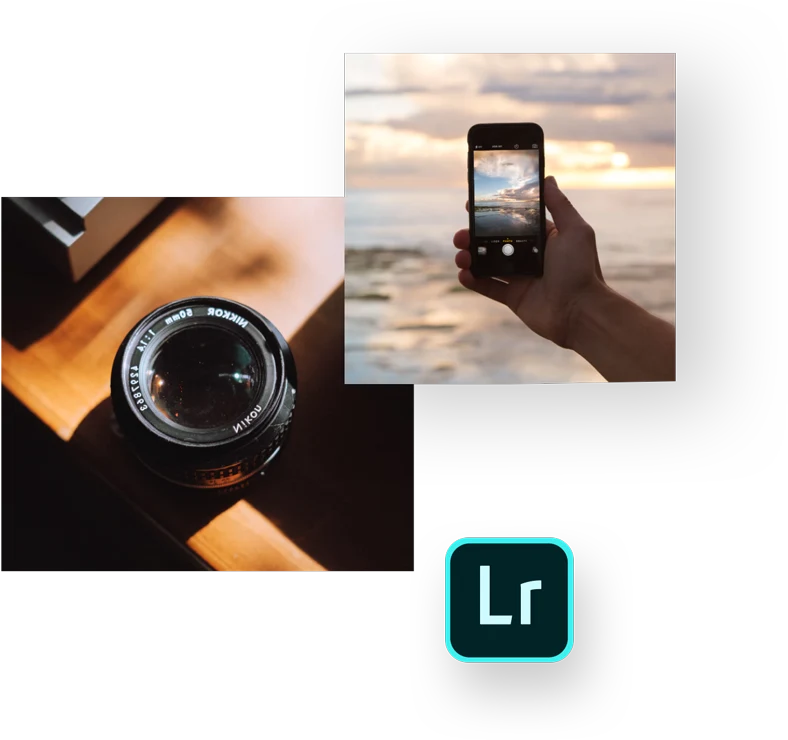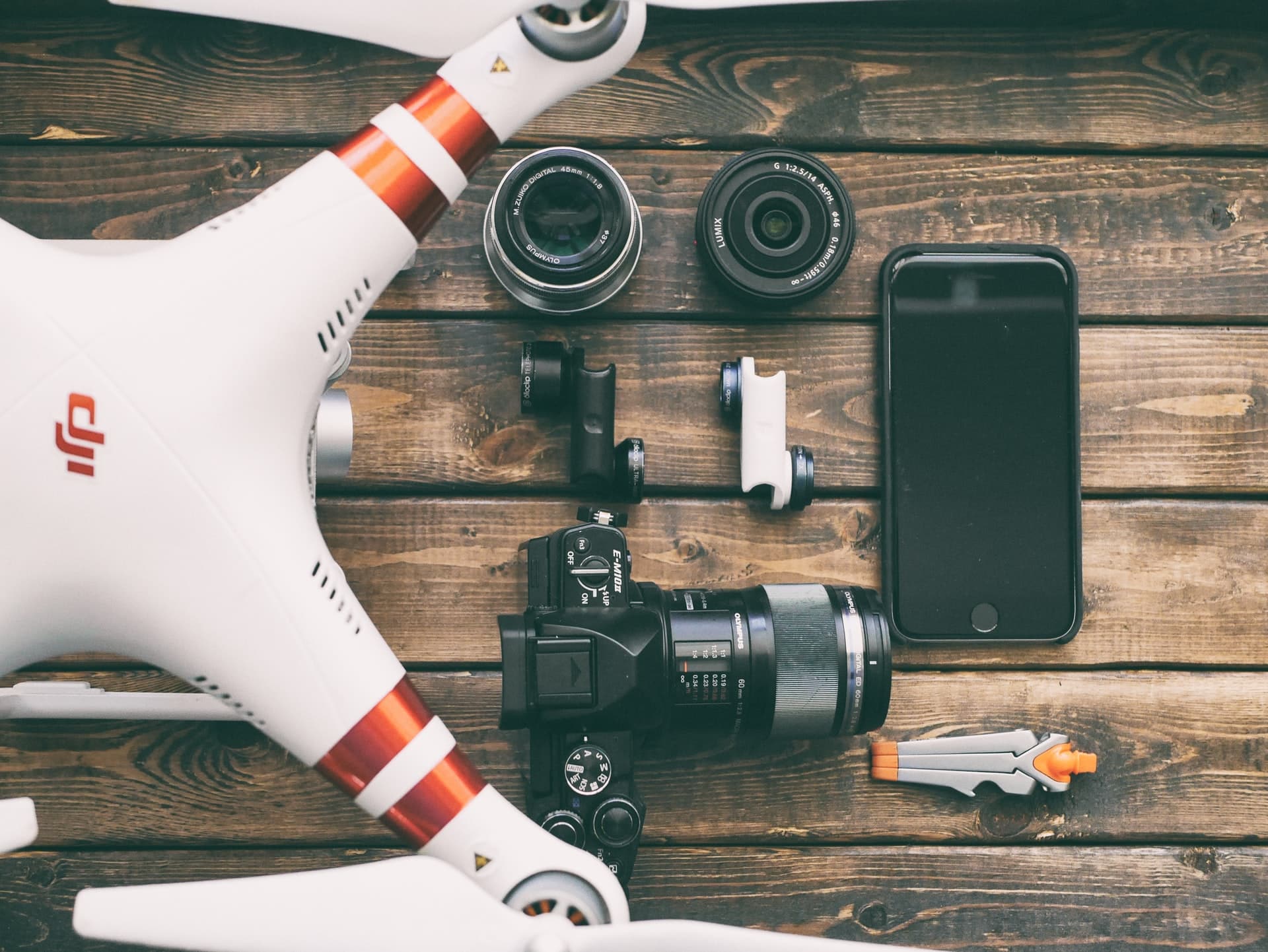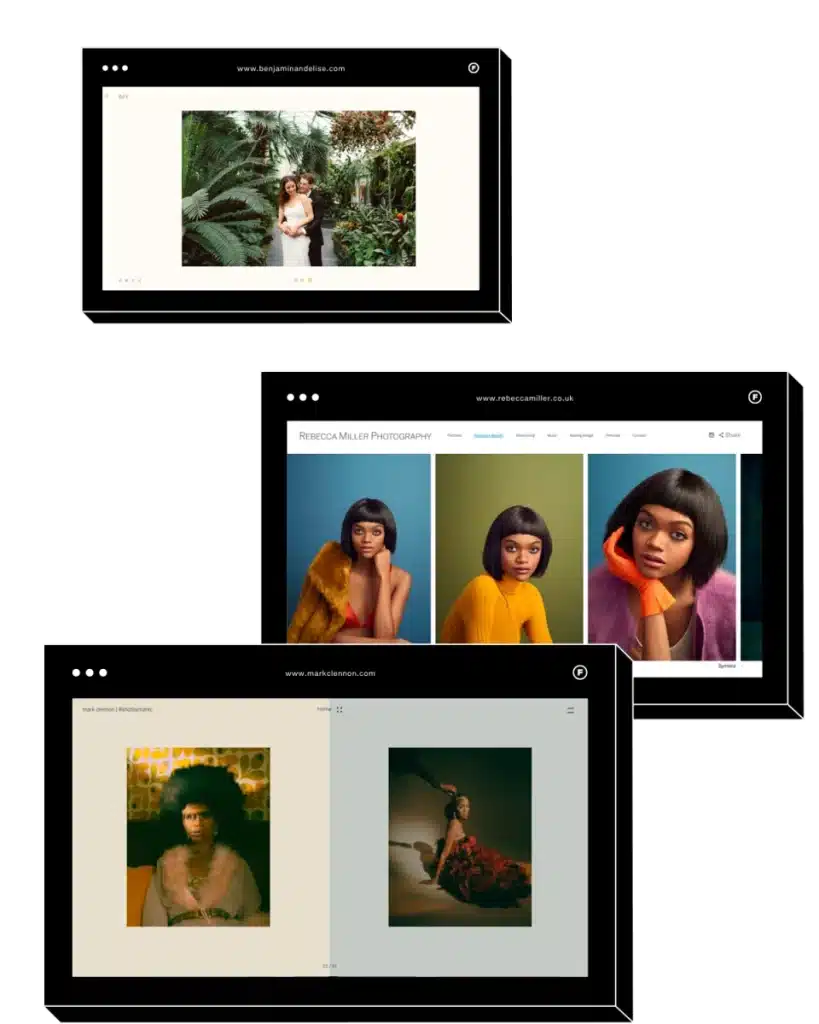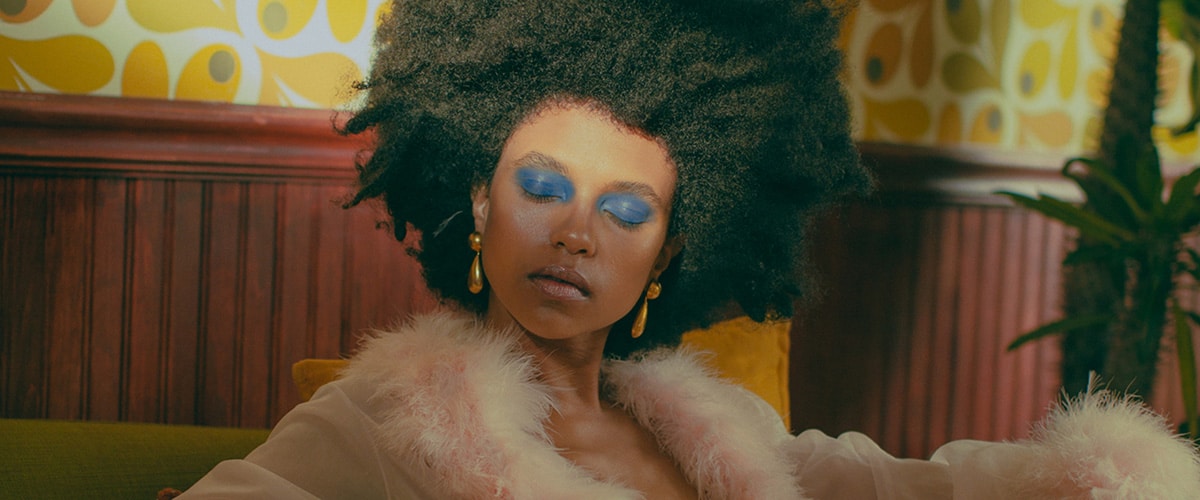
How to Start a Photography Business
A step-by-step guide to show you how to start your own photography business.
Learn how to start a photography business with this helpful guide.

Explore different styles before finding your niche.
Trying out different types of photography is a great way to develop your skills when you’re starting a photography business. You can start with what you already know and love, and branch out from there, or if you’re feeling adventurous try something completely different from your usual work. If you have a lot of experience in wedding photography, try taking some still life shots to see how it feels (and learn a new technique). Amazing at headshots? Consider moody, fine art work. Play with different styles and take note of which ones you prefer—and where your work is the strongest.
If you have a lot of experience in wedding photography, try taking some still life shots to see how it feels (and learn a new technique). Amazing at headshots? Consider moody, fine art pieces. Play with different styles and take note of which ones you prefer—and where your creativity shines the strongest.
Here are a few different types of photography you can consider:
Wedding photography
Newborn photography
Maternity photography
Portrait photography
Landscape photography
Fashion photography
Still life photography
Product photography
Fine art photography
Food photography
Wildlife photography
Business photography
Film photography
Once you have an idea of the niche you’d like to focus on for your photography business, start to curate your best work. Hone in on what you’re good at and what you enjoy doing. Your photography business can grow and expand as you try new photography styles.

Determine your ideal clientele.
Once you’ve decided on the type of photography you’ll be focusing on, it’s time to determine your ideal type of client. It’s important to consider your ideal client persona, as it could affect your marketing strategy and pricing for your services. Here are a few factors that can help you decide on the type of clients you’ll want to photograph for:
Client location vs your location: Your clients may not always live in the same city as you. Therefore, you’ll need to determine whether you’d prefer to have local clientele or you’re willing to travel further for these photography projects. Many clients tend to prefer photographers that are located within their location, as this can save them potential traveling costs.
Demographics: Your talents and skills may also determine the type of clients you want to work with. You want to choose clients that you are most comfortable working with. For example, you may be great at working with kids, while some photographers may excel at capturing fashion models for commercial photo shoots.
Brand and company industry: One of the best parts about having your own photography business is the freedom to choose the type of companies you want to work with. If you’re working with corporate photo shoots, you can decide the type of products, companies, and brands you want to associate your personal brand with. Are you a strong advocate towards environmentalism and equality? You may want to choose a company based on their values and missions.
Style: Your personal style and brand can also draw in clients. Some people may be drawn by your take on fine art and moody pieces, while some may prefer abstract. Your signature style will distinguish your photography skills from others.
Interests: Lastly, what interests you most? You want to be able to explore your creative freedom while working on fixed assignments. At the end of the day, it’s important to take on projects and assignments that excite you.

Creating your personal brand.
Having your own personal brand is important to differentiate yourself from other photographers in the market. Once you’ve decided the niche you’ll be focusing your photography business on, you’ll want to focus on creating a personal brand for yourself. Your personal brand can also showcase the type of photography you are specializing in.
Brand Name
One way you’re going to differentiate yourself from other professional photographers is to think of a business name that reflects your brand. Create a business name that’s distinctive and memorable. Whether you’re choosing to use your full name as a business name or a creative one, make sure you choose a business name that can represent you.
Logo
Develop a unique logo that complements your business name. The design of your logo will represent you, your creativity, and your skills. The logo will be used across different platforms, including your photography website, social media, photographer business cards, and your promotional photos online as a watermark.

Build a professional online portfolio website.
Before starting a photography business, you’ll need a professional photography website to send potential clients. Your online portfolio website will make for a great place to house all your projects. By creating an online portfolio website, future clients will be able to understand you, your business, and your creativity.
Starting a business can be time-consuming and it’s important to allocate your time to the important elements to create a successful business. That’s why it’s important to choose a website builder that’s easy to use, effective, and customizable. You’ll want to build a website that allows you to easily update with your latest projects. With the right website builder, you can create your website quickly and easily:
Sign up for your free trial with Format—no credit card required.
Choose a template you like. Don’t spend too much time on this, you can change it whenever you want to give your website a new look.
Add your work. Curate your photographs and create a gallery or custom page to showcase your creativity online.
Customize your site. Edit your site menu to make sure it shows potential clients exactly who you are as a photographer.
Personalize the design. Ensure options like the template preset, fonts, and colors are on brand with your photography business.
Want to do more? Sell things in your online store, add SEO and social media integration, and go further with your business.
If you’re still unsure how you want your website to look, take inspiration from other photography portfolio websites. Take a look at the way other professionals are displaying their services and projects. Do they have a blog? Do they have a separate contact us page? What type of information are they sharing about their business and their experience? You can also make note of their website designs, the font style, color schemes, and add ons. Then, incorporate these elements into your own portfolio website.
To learn more about how to make a photography website, we have you covered with an in-depth guide.

Start with what you’ve got.
Money doesn’t have to be a barrier when you’re starting a photography business. If you can’t afford that $5,000 DSLR camera, start with your phone. Use the tools you have and then go from there. Mobile photography is extremely popular and giving a lot of people the tools to become photographers at an accessible price. You don’t have to spend $20,000 on gear anymore.
Make investments in your photography gear as you grow your career and earn more money. Many professional photographers will suggest upgrading your camera peripherals before spending too much on a top of the line professional DSLR or mirrorless camera. Some of the most important accessories to upgrade as you take your photography business to the next level include items such as:
Lenses
Lighting equipment
Lens filters
Investing in software to edit the images, studio management software to manage client relationships and invoicing, and a software solution to deliver your final product to your customers through private proofing galleries, like the built-in photo proofing tool that comes with all Pro and Unlimited Format website plans.

Keep growing your skills, along with your business.
When it comes to staying on top of the industry with your photography business, diversifying is key. We’ve moved beyond simply including social media and being Web 2.0 ready, and client expectations are very different nowadays. For example, if you want to start a photography business that focuses on weddings, people want more than pictures—they want the full experience of having a photographer who understands events, they most likely want video, and they may even require multiple shooters. If you start out with a good foundation you can develop various skills as you go along—such as videography or event management.
You may also want to explore a new niche to offer different photography services for your clients too. If you’re a wedding photographer, you may want to consider offering portrait photography and other event photography services. Not only will you learn a new niche, but this will also help you build a new line of service for additional income.
There are a lot of ways to keep upgrading your skills, from part-time studies at a local college or university to free online courses for photographers.

Know what you’re worth.
When you’re starting your own photography business, it’s important to be very clear on the photography pricing structure of your work. You need to value your work and your time. Whether you’re starting a business as a side hustle or a full-time business, understand the costs that you need to charge your clients to sustain your business. Make sure you’ve done your research on industry standards and market rates in your region and niche to know how much you should charge.
A simple formula to figure this out:
Cost of materials + cost of labor + cost of overhead = total cost Total cost + desired profit (ie. 30%) = final price
This calculation has two necessary steps—it’s key to know your total cost before determining how much profit you want to make. Skipping this step could put you at risk of marking too much money for profit.
Material and Overhead Costs
Make sure you take all the potential costs of owning a photography business into consideration. Understand the costs that you’re going to incur per year and also the one-off purchases for your photography business.
Prints
Photobooks
Packaging
Shipping
Hard drives
Cloud subscriptions
Gear rental
Studio rental
Props
Software
Lighting
Cameras and lenses
Labor Costs
Labor can be harder to define. It’s important to account for all the time you spend both pre-production (setting up your equipment, making sure you have everything you need for the shoot) as well as post-production (editing and revisions), including travel time and client meetings.
Another way to figure out where your pricing should be is to just ask another photographer you admire how much they charge for a shoot or prints.
It can be tempting to undersell yourself, but remember that when you do a shoot it’s not just that hour you’re taking pictures.
Consider the other time that goes into delivering client work:
Research and time spent preparing beforehand
Driving to the shoot
Scouting the location
Finding models
Back and forth with clients
Editing
Delivery of client proofs and images
Implementing client feedback
Not everyone who starts a photography business chooses to include a pricing page on their website. But if your focus is on weddings, engagements, or portraits, for example, you might want to include a list of services and fees for potential clients to peruse. If you don’t want to list firm rates, you can include a range, estimates, or let clients know you’re able to provide a fee when they give more details on what they’re looking for. You could even include a place for people to book and pay directly through your website.


Invest time in your business.
Starting a photography business will require an investment of time upfront, as well as continued work outside of strictly photography work. While you may find yourself getting caught up in the creative elements of your work, and ignoring the somewhat boring business side of your work, don’t. It’s important to not take the business management aspects of starting a photography business lightly.
There are many things to consider when it comes to running your photography business, and it may seem totally overwhelming. Worse yet, it may feel like the dull administrative tasks could take up all of your time. The opposite is actually true. Keeping your mind free from a backlog of unpaid invoices or emails filling up your inbox affords you more time to do what you do best.
A good rule to keep in mind is to set aside 20% of your week for administrative work. This includes any tasks you don’t do for current clients: creating and following up on invoices, updating your website, responding to email, looking for new clients, handling your business taxes, and other tasks you need to keep your photography business running smoothly.

Attract clients.
There are a lot of places you can look when it comes to finding new clients, depending on the focus of your photography business. Word of mouth and referrals are great, but they should not be your only source.
The first thing to do is to make sure your photography website is optimized for SEO. It’s a good idea to choose a photography website builder that has built-in SEO tools, but it doesn’t hurt to stay up to date on best practices as well. There are also plenty of free tools you can use to find opportunities on how you can improve your website’s SEO reach.
Once you’ve done that, make sure your social media presence tells the story you want for your photography business. Is your Instagram feed curated, professional, and on-brand? Do you have links to your portfolio website? While you’re there, take a look at your bio and spruce it up if necessary. Do your research when it comes to photography hashtags. This can grow your following and send potential clients to your website. Using the right hashtags is the best way to get your work in front of the right audience.

Sell more work.
There are a lot of places you can start selling your work once you’ve created a professional portfolio website. One of the first places to start is your own online store. As a photographer, you can sell all kinds of products, prints, packages, Lightroom presets, and digital products as well as schedule client bookings or workshops. Make sure you choose a platform that doesn’t charge extra fees so you keep 100% of your revenue.
Stock photography is a popular option for professionals looking to supplement their income as they grow their photography business. You simply submit your images and you’ll get paid every time someone purchases your photos. The one drawback of selling stock photography is the amount of commission per photo can be quite low.
On the plus side, if your work is popular, the commission amounts can add up. Stock agencies are a good way to get your work out there and get feedback about your work by learning what sells.
In addition to stock photography, you can also pitch your photos to websites, magazines, and other publications. It does take more work, but the fees are substantially higher.
If you want to sell your work offline, consider getting a space in local arts markets or craft shows or approaching small businesses like coffee shops to show and sell your work.

Market your photography business.
Of course, being a strong photographer is fundamental, but you need to go beyond simply creating great work—your photography business needs a marketing strategy. If you want to successfully grow your business, you can’t sit back and wait for clients to find you. There are a lot of free or inexpensive things you can do.
A professional blog
A blog can be a great way to tell your brand’s story and connect with your audience without being overly sales-y. Keep your tone friendly but professional. Depending on the focus of your photography business, you can write about many different aspects of your work. If you’re just getting started with your blog, you can talk about past projects and great client stories that you’ve worked on. This will allow website visitors to understand the type of work you’ve done.
Submit your work to online publications
Submitting your work to be featured in well-read online publications is another great way to market your business.
For more free ways to spread the word about your photography business, read our full guide here.
Advertisements
Another easy way to get noticed online is to consider investing in online advertisements. You can allocate a small advertising budget towards Instagram to promote your Instagram portfolio. It can help to drive awareness for your photography business and also get noticed as a photographer.
Many photographers also use Google Ads to drive traffic and leads to their website. Choose keywords that best match your services and use the budget to bid for suitable keywords.
Customer reviews and testimonials
Reach out to your past clients and obtain some positive reviews for your website. Reviews and testimonials will help to build credibility for your photography. In addition, it creates a space to review the success of your projects.
Participate in local exhibits
If you’re looking to build awareness for your personal brand and gain exposure for your photography, consider displaying your images at a local art show or exhibit. People and other photographers will be able to notice your work and you can build your network.
Participate in the community
There are lots of online communities for anyone interested in photography. Whether you’re a professional photographer or just a hobbyist, these online communities are easy ways to connect with like-minded individuals.
Using these online communities, you can connect with other photographers to collaborate or simply just seek for advice. There are lots of seasoned professionals who can provide great tips and helpful insights into the business, especially if you’re just starting your own photography business.
Post on social media
Take advantage of these free social networking platforms to build awareness for your business. It’s free and super easy to use. Simply promote your photography portfolio and share it on your social media pages, such Twitter, Facebook, LinkedIn, and Instagram. From client testimonials to photography or camera tips, you can post a variety of different content to help build a reputation for yourself. Your followers can also get to know you more through behind the scenes videos and photos too.


Protect your business.
When you’re first starting out as a small business owner, protecting your business is extremely important to mitigate potential risks from the future. Whether it’s contract disputes or photography ownership rights, protect your business with the following tips:
Register your business: To start a photography business, a business owner may consider registering their business with the government. Obtaining your business licenses allows you to establish your photography business as its own entity. While this is not a necessity when you’re just starting your business, it may be an option if you’re looking to really expand your business. You’ll want to check with your operating location’s laws to see if you need to register your business down the road.
Acquire business insurance: Whether you’re a contractor or small business owner, you’ll want to protect you and your work. Business insurance not only protects you, but also your clients from unpredictable events and costs that could occur. When you start a photography business, it’s especially important to protect your assets and equipment. Photography equipment, such as your camera and lenses, are expensive and damages could be unpredictable during photoshoots. Whether you’re facing property damage, lawsuits, medical costs, or equipment loss, business insurance can ensure that you’re not facing critical costs that could put you in financial risk. For certain countries, business licenses may be required to obtain insurance. Make sure you check with your own city or state. While business insurance is not cheap, it could help to save money down the road.
Develop business contracts: Contracts are extremely important to outline the services, costs, terms and conditions of your business. Many photographers may find it difficult to discuss policies with their clients, and that’s where contracts come into play. By creating a business contract, you can outline all the agreed details and refer to the contract for any future disputes. The contract protects you and your client from any discrepancies and disagreements. Luckily, there are lots of resources online that offer contract templates to help you save time from creating one from scratch.
Ensure you have model releases: When you take pictures on the city streets or hire a model for your photo shoots, make sure you have a model release on hand. The model release acts as a liability waiver and outlines that the subject of the image or clients are giving the professional photographer permission to use the photographs. It may also outline how the photographer intends to use the images.

Build your network.
Still wondering how to start a photography business? Take inspiration from other successful professional photographers online. When you’re starting your photography business, you need to understand your competitors and the other talents in your industry. Try following other photographers on social media and build your network. Connect with them and review their websites to see how they’re marketing their services.
In addition to connecting with other photographers, you can build your network into connecting with potential vendors, clients, or brands you may want to collaborate with. Follow them on social media and interact with their post. Get noticed by others in the industry and consider collaborating with them.
If you’re just starting your photography journey, you can reach out to other people and brands to collaborate and co-create projects that can further build your reputation. If you’re a wedding photographer, you can reach out to make-up artists or wedding cake vendors to create photo shoots that promote one another. This way, you can leverage their following and social media platforms to promote yourself too.

More tips to help you start a photography business.
When your kickstarting your own photography business, there are a number of factors and elements to consider. If you’re still wondering how to start a photography business, here are some additional ways to take your hobby to a full-time business.
Do I need a business plan?
Starting your photography business can be nerve-wracking, that’s why many people create a business plan to help guide themselves in starting their own small business. While you don’t need to have one, a business plan can help you see your entire business, determine the focus of your business, and establish plans for the future.
To get started on a business plan, you’re going to need to put your niche and business focus into writing. Your business plan should consist of sections of information such as:
Executive Summary
Service Description
Target Market
Competitor Analysis
SWOT Analysis
Marketing Strategies
Operation Strategies
Financial Plans
Future Forecasts
Your business plan will be a road map for you to start your photography business. If you’re interested in taking your business to the next level and get funding for your business, you can use your business plan to let companies and potential partners review your future business plans.
How much does it cost to start a photography business?
Money is another important criterion that photographers consider when starting a business. The most expensive and crucial element for your business is the photography equipment. Quality photography equipment can be expensive.
However, starting a photography business can be as easy and simple as simply having a smartphone. With today’s technology, many smartphone devices can capture stunning images. Despite the practicality of smartphones, many people choose to purchase a DSLR camera, camera lens, reflectors, lights, and other equipment.
Your budget also depends on the type of niche you’re focusing on as well. If you’re focused on capturing photographs and need a studio, you’ll also need to consider the costs related to an office space. However, if you’re just starting out, then you don’t need to spend an abundance amount of money on equipment yet.
Do I need to have experience to start a photography business?
While it helps to have experience to start a photography business, it’s not a must. However, experience does provide you with an advantage in landing gigs. The benefit of having experience is that it provides you with the necessary tools and skills to make your creativity shine.
How to start a photography business without experience? Just pick up your smartphone or camera and start snapping pictures! If you don’t have any experience in photography, you can get started by investing in yourself with workshops, tutorials, and constant practice. Learning should never stop, even if you have years of experience.
In fact, for some people, they may choose to hire a more experienced photographer. However, there are people who are willing to work with fresh photographers in the industry based on your style, talents, and skills. While you may not have the years of experience, make sure you can showcase your talents through your online portfolio.
How do I get my first photography client?
Now that you’ve set up your photography business, you’re ready to get your first client. One of the best ways to obtain clients is through referrals of friends and families. For many photographers, their first clients were from people they already know. This is one of the easiest ways to get started and start building content for your portfolio.
Another way to get clients is through building contacts with other photographers and industry professionals. You can reach out to professionals by commenting on their projects or simply sending your online portfolio to them. You can contact event planners, magazine editors, and other industry professionals to start building a presence.
If you want to build your name and clientele, consider showcasing your photographs at local art exhibits too. This allows people to see projects you’ve worked on and recognize your name. By showing your personal projects, people will be drawn by your style and contact you for future assignments.


Get started.
There are lots of steps and factors to consider when starting a photography business. Whether you’ve already started launching your business or you’re still brainstorming, these actionable tips will be able to tackle the question of how to start a photography business and set yourself on the right path.
The process may seem like a bit daunting, but it will be a rewarding journey ahead as you pursue your dream career and have creative freedom for your own business. A business is a work in progress, so you’ll always be exploring new opportunities and challenges to improve your business and yourself.
You’re only a step away from kickstarting your own business.
Updated on May 27, 2020 | By Steph Davidson
